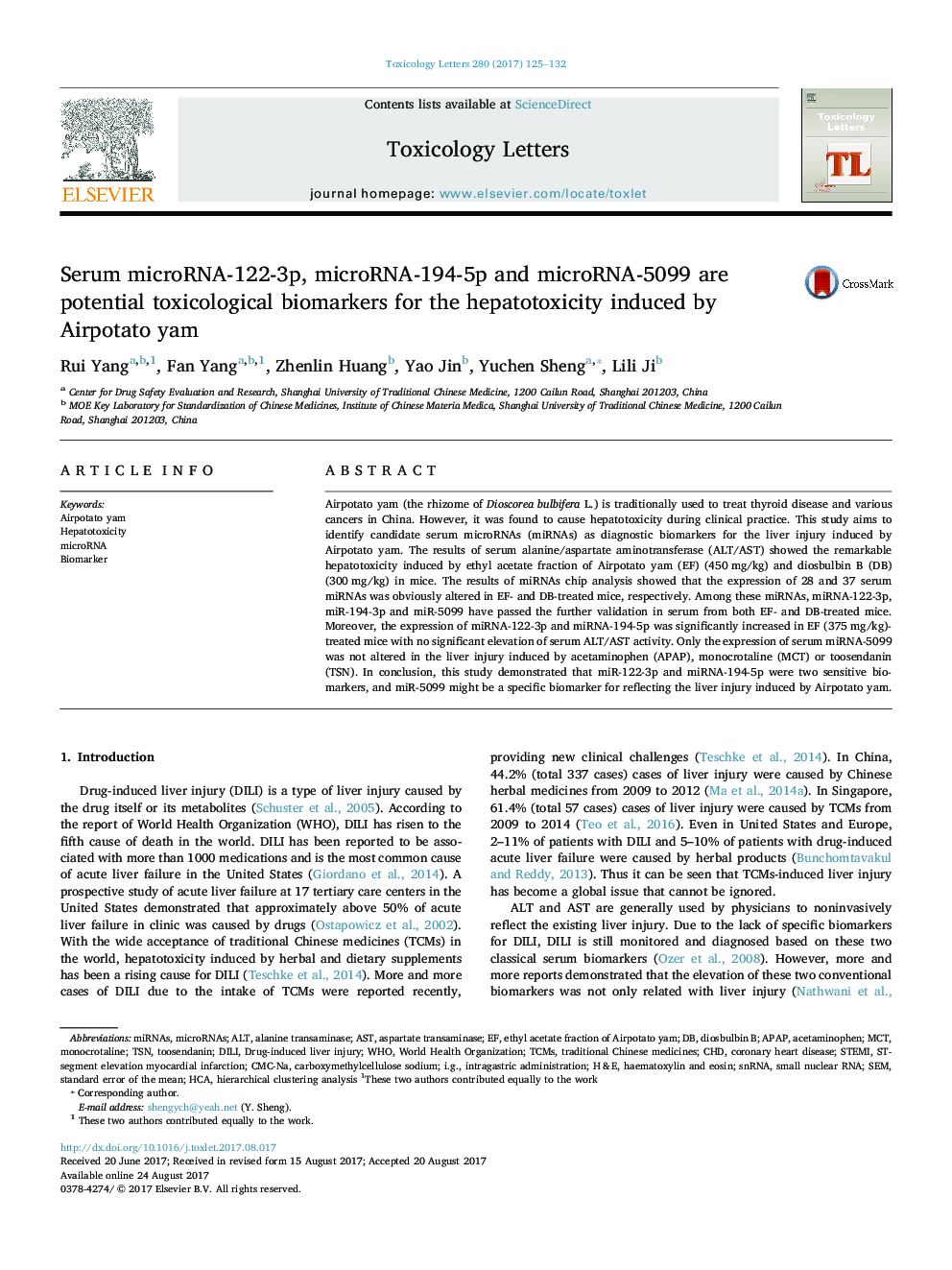| Article ID | Journal | Published Year | Pages | File Type |
|---|---|---|---|---|
| 5562029 | Toxicology Letters | 2017 | 8 Pages |
â¢Airpotato yam induced liver injury in mice.â¢miRNA microarray results showed total 28 and 37 serum miRNAs altered in EF or DB-treated mice, respectively.â¢miR-122-3p and miR-194-5p might be biomarkers of Airpotato yam-induced liver injury with high sensitivity.â¢miR-5099 might be a biomarker of Airpotato yam-induced liver injury with high specificity.
Airpotato yam (the rhizome of Dioscorea bulbifera L.) is traditionally used to treat thyroid disease and various cancers in China. However, it was found to cause hepatotoxicity during clinical practice. This study aims to identify candidate serum microRNAs (miRNAs) as diagnostic biomarkers for the liver injury induced by Airpotato yam. The results of serum alanine/aspartate aminotransferase (ALT/AST) showed the remarkable hepatotoxicity induced by ethyl acetate fraction of Airpotato yam (EF) (450Â mg/kg) and diosbulbin B (DB) (300Â mg/kg) in mice. The results of miRNAs chip analysis showed that the expression of 28 and 37 serum miRNAs was obviously altered in EF- and DB-treated mice, respectively. Among these miRNAs, miRNA-122-3p, miR-194-3p and miR-5099 have passed the further validation in serum from both EF- and DB-treated mice. Moreover, the expression of miRNA-122-3p and miRNA-194-5p was significantly increased in EF (375Â mg/kg)-treated mice with no significant elevation of serum ALT/AST activity. Only the expression of serum miRNA-5099 was not altered in the liver injury induced by acetaminophen (APAP), monocrotaline (MCT) or toosendanin (TSN). In conclusion, this study demonstrated that miR-122-3p and miRNA-194-5p were two sensitive biomarkers, and miR-5099 might be a specific biomarker for reflecting the liver injury induced by Airpotato yam.
